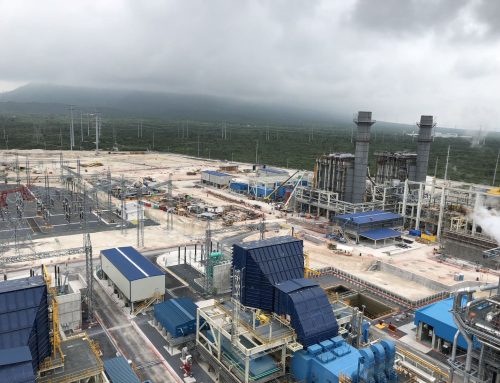Activities That Comprise a Successful Performance Test Program
1) Creation/Revision of Test Procedures
The test protocol stage of a power plant performance test is a critical phase where the specific procedures and guidelines for conducting the test are defined. This stage ensures compliance with recognized standards such as the American Society of Mechanical Engineers (ASME), International Organization for Standardization (ISO), Deutsche Industrie Normen (DIN), and International Electrotechnical Commission (IEC) testing codes. Standards like ASME PTC 46, ASME PTC 6, ASME PTC 4, ASME PTC 22, and others provide comprehensive guidelines for specific aspects of the performance test, such as instrumentation, measurements, calculations, and reporting requirements. Adhering to these standards ensures that the test is conducted in a consistent, accurate, and reliable manner, enabling meaningful comparisons, evaluation of results, and facilitating industry-wide benchmarking and best practices.
2) Modeling of Power Plants
Power plant modeling plays a crucial role in diagnosing and evaluating the performance of power plants. By creating accurate and detailed models that represent the physical and operational characteristics of the plant, TGPS can simulate various operating scenarios and assess the system’s behavior. These models enable the identification of inefficiencies, bottlenecks, and potential issues within the power plant, providing insights into its overall performance. Through modeling, different parameters can be manipulated and analyzed, allowing for optimization of the plant’s operations and control strategies. Additionally, models facilitate the diagnosis of faults or malfunctions by comparing simulated results with actual plant data, enabling the detection and localization of potential issues. Overall, power plant modeling empowers operators and engineers to gain a deeper understanding of the plant’s behavior, make informed decisions, and implement targeted improvements, ultimately enhancing performance and maximizing the plant’s operational efficiency.
3) Test Execution
The test execution stage of a power plant performance test is a pivotal phase where the defined protocols and procedures are put into action. During this stage, the test is carried out according to the predetermined plan, and various performance parameters are measured and monitored. TGPS Engineers and Technicians collect accurate and reliable data at specified intervals, ensuring that the test conditions and operational parameters are maintained within the desired range. This stage involves meticulous attention to detail, including the proper functioning of instrumentation, adherence to safety protocols, and monitoring of critical parameters. Any deviations or anomalies are carefully noted and addressed promptly. The test execution stage is essential for capturing real-time data that represents the plant’s actual performance under specific operating conditions, providing a foundation for accurate analysis, interpretation, and subsequent reporting of the test results.
4) Detailed Calculation Of Test Results
The calculations and results stage of a power plant performance test is a critical phase where the collected data is analyzed, processed, and interpreted to derive meaningful insights. Established methodologies and calculation procedures are employed to assess the performance parameters and evaluate the efficiency of the power plant. This stage involves comprehensive data validation, statistical analysis, and comparison with industry standards or benchmarks. Through sophisticated calculations and modeling techniques, the test results are synthesized into a comprehensive report that provides a clear understanding of the plant’s performance. The calculated values not only reveal the plant’s energy conversion efficiency, heat rates, and power output but also facilitate the identification of any areas for improvement. This stage plays a vital role in generating actionable recommendations for enhancing the power plant’s overall performance, optimizing its efficiency, and addressing any identified operational shortcomings.
FAQ´s
Why run a power plant performance diagnosis?
Power plant diagnostics tests are essential for evaluating performance, optimizing efficiency, ensuring compliance, maintaining equipment health, and enhancing safety and reliability. They provide valuable insights for decision-making, maintenance planning, and continuous improvement, ultimately maximizing the operational and economic potential of the power plant.
How do I make sure the test results are valid?
Engaging specialized contractors for power plant performance testing like TGPS, is the best way to ensure the proper execution of the test and the validity of its results. With their extensive expertise and experience in this domain, TGPS offers comprehensive knowledge for effective test planning, parameters and instruments selection, and accurate test procedure establishment. Their employment of reliable data acquisition systems, high-precision instruments, and rigorous quality control measures ensures precise measurement and validation of performance parameters, while advanced statistical analysis techniques enable comprehensive data evaluation and benchmarking against industry standards. TGPS provides an independent and impartial review, eliminating potential biases and bolstering the credibility and reliability of the power plant performance test results.
What are typical performance parameters to evaluate?
During a Power Plant Performance Test, the typical parameters evaluated include Heat Rate or Thermal Efficiency and Power Output. However, additional parameters like Emissions and Noise may also be assessed based on contractual requirements. These performance parameters collectively determine the operational efficiency, reliability, and environmental impact of a power plant, providing insights into its overall performance and potential areas for improvement.




